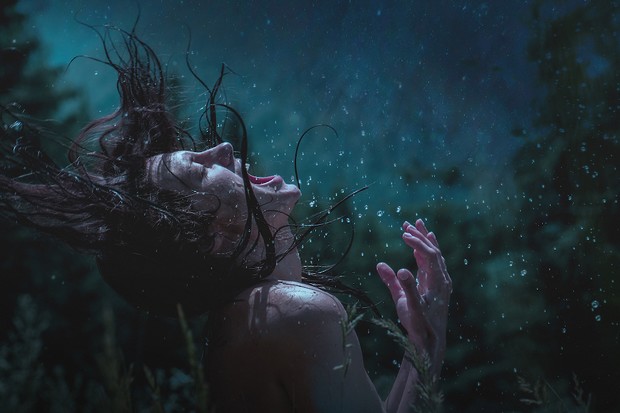Production / Financement - Slovaquie
Dossier industrie: Produire - Coproduire...
La production slovaque bat des records en 2022, en pleine reprise post-pandémie
par Martin Kudláč
L'année 2022 a été marquée par un remarquable coup de collier de la part de l'industrie du film slovaque, avec 50 productions pour le cinéma, un progrès substantiel par rapport aux années précédentes

Cet article est disponible en anglais.
Despite the residual impact of the pandemic, 2022 bore witness to the triumphant resilience of the Slovak film industry, according to recent reports. The year commenced under the shadow of pandemic-induced restrictions, but as they gradually lifted, the cultural scene in Slovakia underwent a marked revival. Theatres, galleries and concert halls all reopened their doors, initiating a surge of cultural activities that began to regain pre-pandemic footfall.
Significantly, film production and distribution also experienced a revivification, and cinema audiences grew steadily, though with caution initially. The pandemic had reoriented viewers' preferences towards home-based film consumption, but the lure of the big screen remained strong (read the news).
Film production reached a record high in 2022 with the production of 50 Slovak films intended for cinemas. This indicates a substantial increase from the 44 films produced in 2019 and the lower numbers of 28 and 26 in 2020 and 2021 respectively. These figures comprise 28 fiction feature films, 20 documentaries and 2 animations. Of the 28 fiction features, 15 were fully or majority Slovak productions, such as Victim [+lire aussi :
critique
bande-annonce
interview : Michal Blaško
fiche film], The Ballad of Piargy [+lire aussi :
critique
bande-annonce
fiche film] and Nightsiren [+lire aussi :
critique
bande-annonce
interview : Tereza Nvotová
fiche film], while the minority co-productions included the Czech Oscar candidate Il Boemo [+lire aussi :
critique
bande-annonce
interview : Petr Vaclav
fiche film], Arvéd and the sci-fi drama Ordinary Failures [+lire aussi :
critique
bande-annonce
interview : Cristina Grosan
fiche film]. Of the 20 feature-length documentaries, 11 were 100% or majority Slovak productions (Denis Dobrovoda’s The Cathedral [+lire aussi :
bande-annonce
fiche film] and Mira Erdevicki’s Leaving to Remain [+lire aussi :
critique
fiche film] among others) and 9 were minority co-productions, such as Igor Ivanko’s Fragile Memory [+lire aussi :
critique
bande-annonce
interview : Igor Ivanko
fiche film] and Lucie Králová’s critically acclaimed experimental documentary Kapr Code [+lire aussi :
critique
bande-annonce
interview : Lucie Králová
fiche film]. A majority of the productions were in the standard budget range for European cinema, with the most expensive film being Journey to Yourland [+lire aussi :
critique
bande-annonce
fiche film] (€3,854,008) and the cheapest, Sheep (€2,000).
Slovak companies also enjoyed substantial success in securing funding through European programmes such as Eurimages and Creative Europe - MEDIA. Five Slovak projects were supported, and Slovak companies received a record amount of €1,830,472.38 in the MEDIA programme. The industry's newfound dynamism also witnessed the rise of emerging filmmakers, with fourteen full-length films directed by first-time directors. A majority of these films are 100% or majority Slovak productions.
In terms of external funding, Slovak companies had an outstandingly successful year within the Creative Europe Programme, amassing a record €2,595,885.28 in support – the highest amount since Slovakia's induction into the Programme. Of this, €1,830,472.38 were procured from the MEDIA sub-programme. An additional thirteen companies secured a total of €765,412.90 for European Cooperation Projects within the Culture sub-programme.
Further success was marked within Eurimages, the Council of Europe's cinematographic fund and the only European fund supporting transnational co-productions of feature-length films. In 2022, 14 Slovak projects applied for support from Eurimages, of which five were successful. These included Ivan Zachariáš’s The End of the World, which received €276,000 in support, and Ivan Ostrochovský’s third full-length feature film, The Spring (read the news), which secured €260,000. Additionally, the animated project Living Large, directed by Kristína Dufková, gained €393,000, while Arsen Anton Ostojič’s The Crystal Planet received €149,000, and Szabolcs Tolnai’s Cycling with Zoli the Turk garnered €175,000.
Vous avez aimé cet article ? Abonnez-vous à notre newsletter et recevez plus d'articles comme celui-ci, directement dans votre boîte mail.















